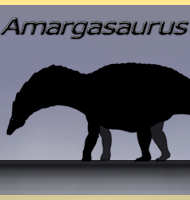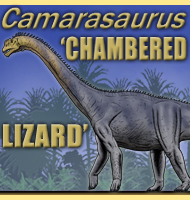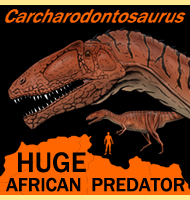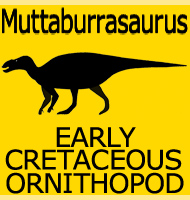

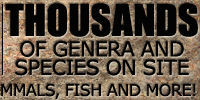
Padillasaurus
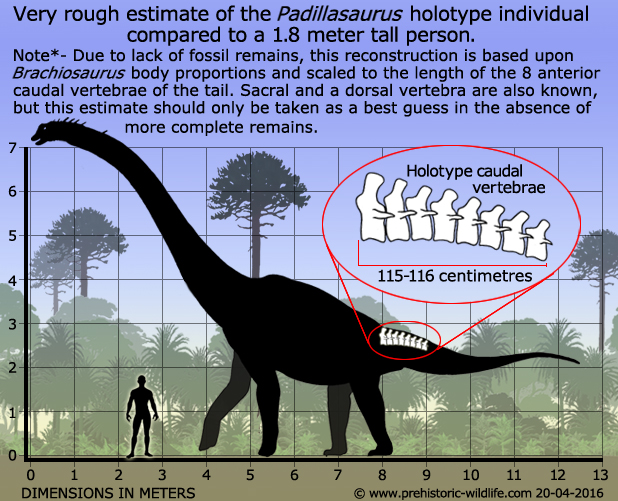
Name:
Padillasaurus.
Phonetic: Pah-dil-la-sor-us.
Named By: J. L. Carballido, D. Pol, M.
L. Parra Ruge, S. Padilla Bernal, M. E. P�ramo-Fonseca
& F. Etayo-Serna - 2015.
Classification: Chordata, Reptilia, Dinosuria,
Saurischia, Sauropoda, Brachiosauridae.
Species: P. leivaensis
(type).
Diet: Herbivore.
Size: Length of the eight anterior caudal vertebrae
about 115-116 centimetres long. Total size uncertain due to lack of
remains, but comparisons to Brachiosaurus
yield an estimate of about 14
meters long (measuring along the curvature of the neck, body and tail)
for the holotype individual.
Known locations: Colombia - Paja Formation.
Time period: Barremian of the Cretaceous.
Fossil representation: 1 dorsal (back), 2
sacral and 8 caudal (tail) vertebrae.
The
discovery of Padillasaurus has been a very
important step in South
American palaeontology as it represents the first confirmed genus of
a brachiosaurid sauropod
dinosaur that is known on this continent (though
isolated and very fragmentary remains have been found before, they
were not complete enough to name a genus). Unfortunately the only
known fossils at the time of writing are some eleven vertebrae, which
makes it very difficult to figure out not only distinctive features,
but also even simple information such as the size given that we don’t
even know how long the neck was.
However,
if we assume that Padillasaurus had the same
approximate body
proportions as Brachiosaurus,
the genus that the Brachiosauridae is
named after, and then scale our reconstruction so that the first
eight caudal vertebrae combined measure about 115-116 centimetres
of the length, then this would give us a result of about fourteen
meters
long (measured by curvature) for the full dinosaur.
Some
things that we can infer about Padillasaurus is
that by living in
Barremian stage of the Cretaceous, it was one of if not the last
brachiosaurid sauropod dinosaurs to exist in Gondwana, the southern
collection of the continents during the Mesozoic. A good question
would be how did Padillasaurus reach South
America? For a long time
popular science publications claimed that after the Triassic South
America was completely isolated from the rest of the world, but today
we now know that is simply not true.
The
presence of spinosaurid
and carcharodontid
dinosaurs in both South
America and Africa is proof that animals were travelling between the
two continents all the way up until the early Cretaceous.
Brachiosaurid sauropods, most commonly associated with North America
are also known from Europe as well as North Africa, creating a
picture where they may have travelled the long way around to South
America. Something possible since there also seems to have been
limited faunal interchanges between at least Western Europe and North
Africa given the presence of very similar dinosaur types in both
areas. This journey would probably not have been taken within the
space of a single lifetime, but over the course of hundreds, maybe
even tens of thousands of years by successive generations.
Brachiosaurid genera that lived in Africa include Giraffatitan,
which lived during the late Jurassic, and it may have been
individuals from these genera that crossed over into South America.
Only time and future fossil discoveries will tell for sure.
Further reading
- A new Early Cretaceous brachiosaurid (Dinosauria,
Neosauropoda) from northwestern Gondwana (Villa de Leiva,
Colombia). - Journal of Vertebrate Paleontology
35(5):e980505:1-12. - J. L. Carballido, D. Pol, M.
L. Parra Ruge, S. Padilla Bernal, M. E. P�ramo-Fonseca
& F. Etayo-Serna - 2015.
----------------------------------------------------------------------------
Random favourites
 |
 |
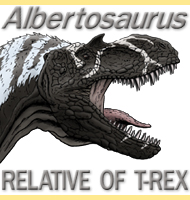 |
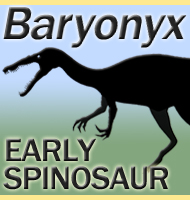 |
